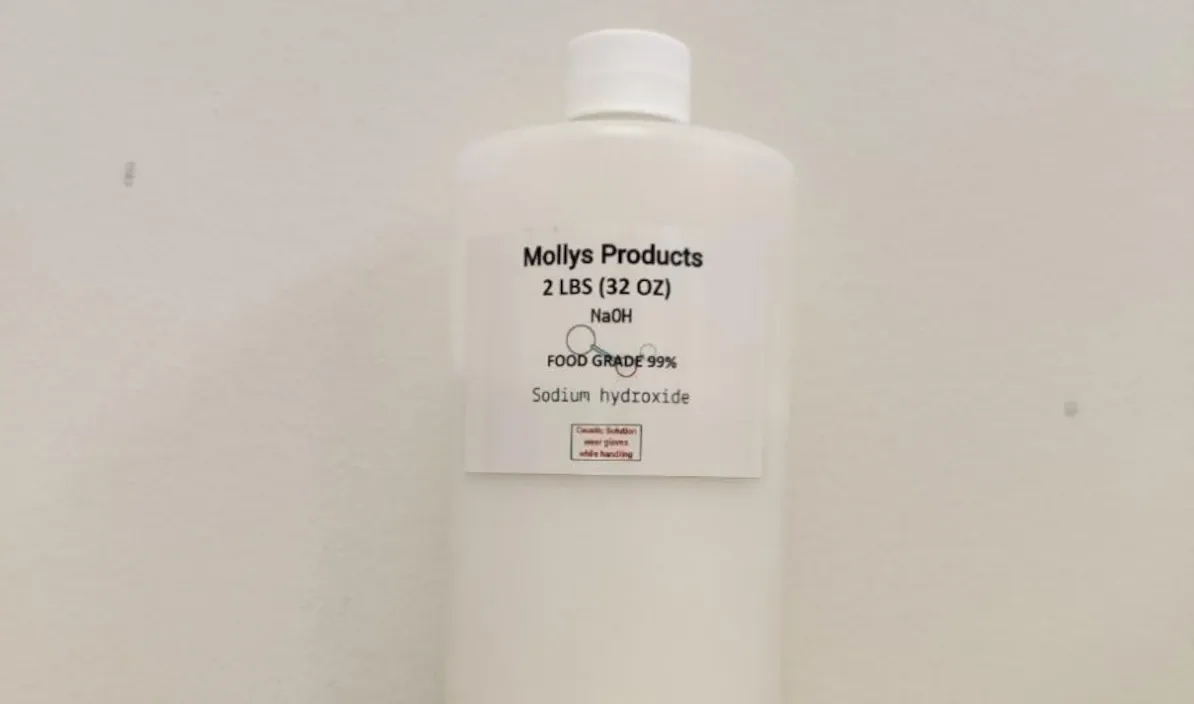Manufacturer refuses to recall product, so consumers are on their own.
Hydrogen peroxide is in many medicine chests and kitchen cabinets but it has significant safety risks and shouldn't be used without precautions. And some strengths and brands shouldn't be used at all.
In the most recent case, the supplier of hydrogen peroxide sold at Walmart is refusing to recall the product even though it is not in a child-resistant package, putting children at risk of chemical burns to the skin and eyes.
The U.S. Consumer Product Safety Commission (CPSC) is warning consumers to immediately stop using Mollys Products’ sodium hydroxide and says it violates the Poison Prevention Packaging Act (PPPA) and the Federal Hazardous Substances Act (FHSA).
The seller, Burgess Jackson, Inc. of Philadelphia, Pennsylvania, has not agreed to recall the Mollys Products’ sodium hydroxide or offer a remedy to consumers.
The Mollys Products’ sodium hydroxide products were sold online exclusively at www.walmart.com from March 2018 through March 2023 for about $15 for the 2-pound (32 ounces) bottle.
CPSC evaluated the 2-pound (32 ounces) bottles and is aware Mollys Products also sold 5-pound (80 ounces) bottles. The white label on the products displays the brand name, bottle size, “NaOH,” “Sodium Hydroxide” and a warning to wear gloves. The 32-ounce bottles have “Food Grade 99%” on the label.
Not the best medicine
Historically, hydrogen peroxide has been used as first aid for cuts and scrapes but it's time to move on to more modern wound care, says Sarah Pickering Beers, MD, a family physician at the Cleveland Clinic.
“Hydrogen peroxide has fallen out of favor as a wound cleanser,” Dr. Beers says. “Studies have found that it irritates the skin. It may prevent the wound from healing, doing more harm than good.”
So what do you use on a scrape or cut? “A good wash with soap and plenty of clean water is all you need,” Beers said. After washing, pat dry with a clean towel. Then apply an antibiotic ointment and cover it with a bandage.
Seek medical care for larger wounds and gashes, excessive bleeding or if there’s debris stuck in the wound.
Hydrogen peroxide should also not be used for acne, Beers said. Use products with benzoyl peroxide or salicylic acid for acne breakouts. If breakouts still won’t take a hike, see your doctor.
Don't overdo it
When you use peroxide, go for medical-grade peroxide, which is 3% strength. That means it’s 97% water and 3% peroxide. “Medical grade is strong enough for household use,” Beers said.
You can also buy a more concentrated form of hydrogen peroxide, called food-grade peroxide, with strength as high as 35%. It’s called “food-grade” because the food industry uses it for several purposes, such as processing and bleaching certain foods.
However, Beers says to skip it.
“Food-grade peroxide can be toxic if you inhale it or get it on your skin. And that high strength isn’t necessary for cleaning and disinfecting.”
Hazardous waste
CPSC urges consumers to stop using the Mollys bottles immediately and dispose of them in accordance with local disposal laws.
Due to sodium hydroxide being corrosive and reactive with water, consumers should not pour it down the drain or dispose of it in the trash as sodium hydroxide can cause bodily harm or property damage. Consumers should bring the sodium hydroxide to their local hazardous waste disposal site. Check the U.S. Environmental Protection Agency's Hazardous Waste Programs and U.S. State Environmental Agencies page to find a disposal site.
Prior to disposal, consumers should store the product out of the sight and reach of children. Report any related incidents to the agency at www.SaferProducts.gov.

